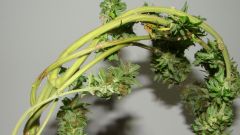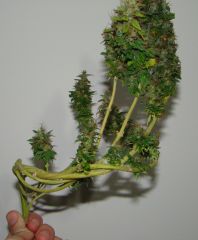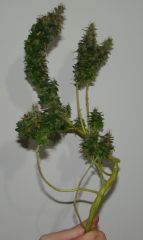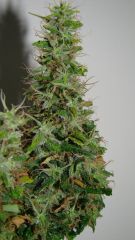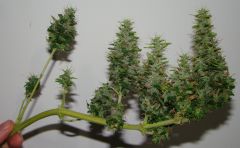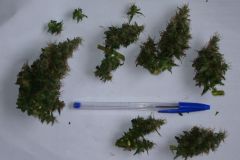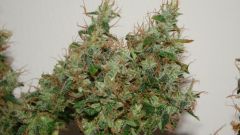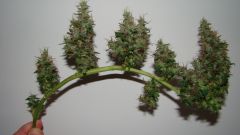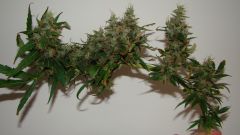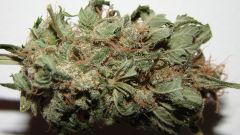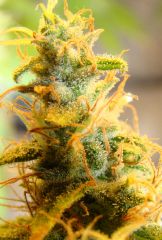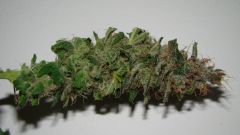AQUI TA O TRABALHO COMPLETO http://www.cmaj.ca/c...maj.110837.long
Spasticity is a common and disabling symp tom that remains a substantial problem for many patients with multiple sclerosis.
Some patients have adverse effects from conventional antispasticity medications; for others, spasticity persists despite treatment. A report
from the Institute of Medicine in the United States concluded that the active compounds of cannabis (marijuana) are potentially effective in
treating neurologic conditions and “should be Tested rigorously in clinical trials.”1 There is evidence that the cannabinoid receptors CB1 and
CB2 may be involved in the control of spasticity in multiple sclerosis2 and that the endogenous ligand of CB1, anandamide, is itself an effective
antispasticity agent.3 CB1 receptors are primarily presynaptic; their activation inhibits calcium influx and glutamate release, and reduces neuronal
excitability by activating somatic and dendritic potassium channels.4 Although many patients with multiple sclerosis
endorse smoking cannabis as therapy, evidence that it relieves spasticity is largely anecdotal, as most trials focus on orally ad min istered cannabinoids.
We sought to assess the safety and efficacy of smoked cannabis versus placebo in patients with multiple sclerosis who have treatmentresistant spasticity.
Methods
Participants
We recruited participants from a regional multiple sclerosis clinic and by referral from special- ists. Our eligibility criteria were spasticity and at
least moderate increase in tone (score ≥ 3 points on the modified Ashworth scale5 at the elbow,
hip or knee). Participants were allowed to continue other treatments for spasticity, with the exception of benzodiazepines, if they had been
taking stable doses for three months or longer. Participants could continue disease -modifying therapy (e.g., interferon β-1a, interferon β-1b, gla tiramer) if they had been on a stable regimen for at least six months. We prohibited any changes to medications that were expected to affect spasticity scores during the trial. Participants could be cannabis-naive or cannabisexposed; if the participants had been previously exposed to can nabis, we asked that they refrain
from smoking cannabis for one month before screening and during the trial. We excluded patients with a history of major psychiatric disorder (other than depression) or substance abuse, substantial neurologic disease other than multiple sclerosis (e.g., epilepsy, head trauma) and severe or unstable medical illnesses, known pulmonary disorders (tuberculosis, asthma), patients who used benzodiazepines to control spasticity or high doses of narcotic medications
for pain, and women who were pregnant or breastfeeding. Our study was approved by the Human Re - search Protections Program at the University of
California, San Diego, the Research Advisory Panel of California, the Drug Enforcement Administration, the US Food and Drug Administration and the National Institute on Drug
Abuse. Our study was monitored by an independent
data safety monitoring board through the
University of California Center for Medicinal
Cannabis Research.
Study design
We used a randomized, double-blind, placebocontrolled
crossover design. We evaluated participants
during eight visits over a period of two
weeks. Visit 1 was a screening visit during which
the participants gave their informed consent. At
this time, we took medical/medication histories,
screened participants for substance abuse (using
urine toxicology) and psychiatric disorders, and
determined spasticity using the modified Ashworth
scale.5 Participants with a positive toxicological
screening result (e.g., presence of delta-9
tetrahydrocannabinol, amphetamines, benzodiazepines,
cocaine and/or benzoylecgonine) were
excluded.
A second screening visit took place within
seven days of the first. At this time, we completed
the expanded disability status scale,
determined spasticity again using the modified
Ashworth scale and conducted a battery
of cognitive tests to reduce practise effects.
During this second visit, participants were
given a “practise session” with a placebo cigarette,
although they were not told that it was
a placebo.
Treatment began within seven days of the
second screening visit, including randomization
to placebo or smoked cannabis. Phase 1 was
followed by an 11-day washout period, after
which participants crossed over to the opposite
treatment group for phase 2. We assessed each
patient before and after treatment for three consecutive
days during each phase. The examiner
was blind to the treatment group to which each
patient was assigned. We assessed patients
using the modified Ashworth scale, a visual
analog scale for pain, a timed walk and cognitive
tests such as the Paced Auditory Serial
Addition Test (PASAT). We as sessed treatment -
emergent effects about 45 minutes after treat-
ment. We collected urine for toxicological
screening at the beginning (baseline) of each
phase.
We assessed participants at the same time of
day to regulate food, medication and time of
cannabis intake. Participants smoked either a
placebo or a cannabis cigarette, using the Foltin
uniform puff procedure (inhalation for 5 s, followed
by a 10-s breath-hold and exhalation, with
a 45-s wait between puffs),6 under supervision in
a ventilated room. Participants completed an
average of four puffs per cigarette.
Prerolled cannabis and placebo cigarettes
with identical appearances and weight (about
800 mg) were provided by the National Institute
on Drug Abuse. Cannabis cigarettes contained
about 4% delta-9-tetrahydrocannabinol (delta-9-
THC) by weight; placebo cigarettes had the
same base material but with the delta-9-THC
removed. We chose to use the 4% delta-9-THC
cigarette available from the National Institute on
Drug Abuse because it most closely resembled
the strength of cigarettes available in the community
at the time of the study (typically
between 5% and 6%).7
We assessed safety and adverse effects by
monitoring participants’ vital signs in addition to
self-report by participants.




